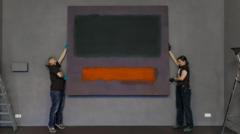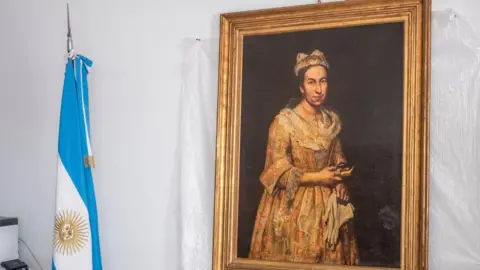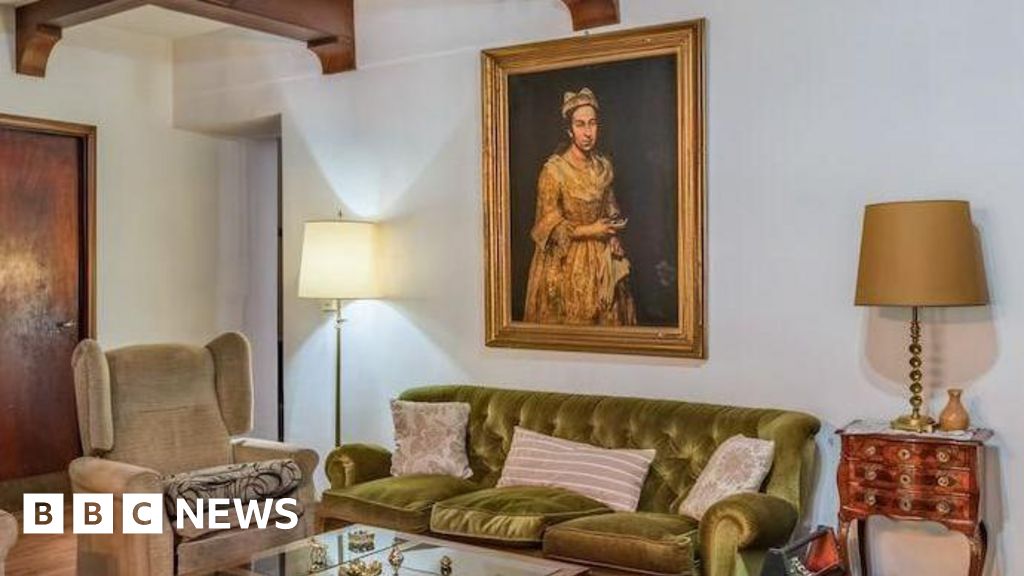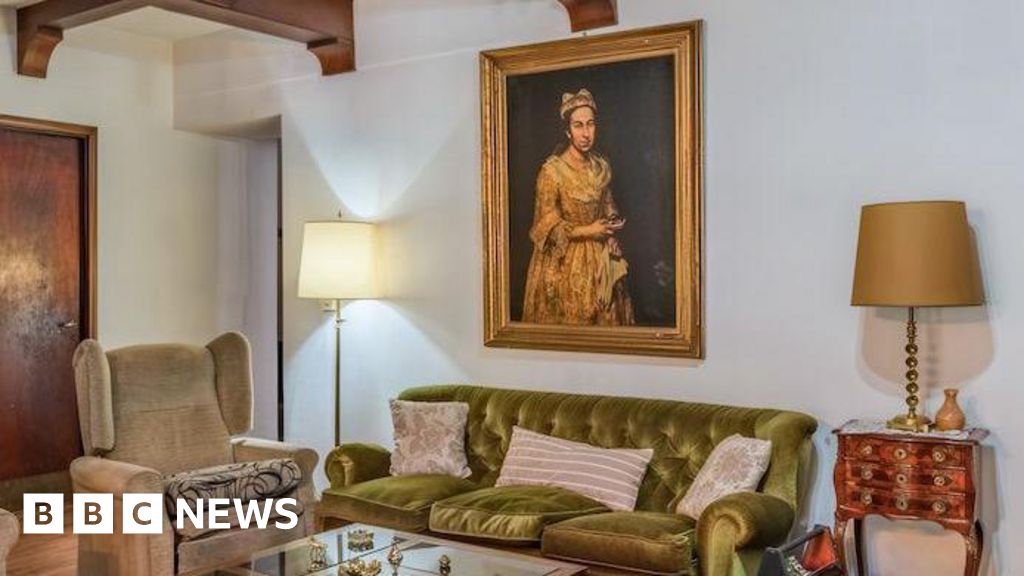The child has damaged a painting worth millions by the American artist Mark Rothko at a museum in Rotterdam. A spokesperson for the Museum Boijmans Van Beuningen said it was considering the "next steps" for the treatment of Rothko's Grey, Orange on Maroon, No. 8. The damage occurred during an "unguarded moment," as stated by the spokesperson, who told the Dutch media outlet Algemeen Dagblad (AD). They characterized the damage as "superficial," with small scratches visible in the unvarnished paint layer at the lower part of the painting.
Valued at approximately €50 million (£42.5 million), the work's restoration has already engaged conservation expertise from both national and international sources. A museum spokesperson indicated, "We expect that the work will be able to be shown again in the future." Sophie McAloone, conservation manager at the Fine Art Restoration Company, remarked on the vulnerability of modern unvarnished paintings like Rothko's. She explained that their complex materials and bright color fields mean even minor damage is readily apparent.
Jonny Helm from Plowden & Smith raised concerns about the implications of this incident for other British museums, like V&A East, which are considering increasing physical access to artworks generally stored away from public eyes. The complexity of Rothko's materials adds to the restoration challenges, especially since the unvarnished condition leaves the artwork exposed. Conservators will likely document the damage and review past successful treatments of Rothko paintings, amid concerns about the artist's unfortunate history of vandalism.
In October 2012, Rothko's painting "Black on Maroon" was deliberately damaged in London, costing approximately £200,000 to restore. Insurance expert Rachel Myrtle stated that fine art insurance covers physical losses, including accidental damages caused by children, although specific exclusions may apply. The Museum Boijmans Van Beuningen hasn't confirmed who will be held liable for this incident, although they have previously expected visitors to pay for damages incurred by their actions.
The museum, which acquired the Rothko painting in the 1970s, has dealt with visitor-related damages before, once billing a tourist who stepped on a peanut butter floor artwork in 2011. Rothko’s "Grey, Orange on Maroon, No. 8" is categorized as part of the color field painting movement, showcasing large swathes of solid color. Recent years have seen similar misfortunes in the Netherlands with other pieces of modern art. A recent years' pattern includes damages caused during attempted thefts or even accidental disposal during renovations. Each incident sheds light on the need for careful policies around the accessibility of art, particularly works of significant value.
Valued at approximately €50 million (£42.5 million), the work's restoration has already engaged conservation expertise from both national and international sources. A museum spokesperson indicated, "We expect that the work will be able to be shown again in the future." Sophie McAloone, conservation manager at the Fine Art Restoration Company, remarked on the vulnerability of modern unvarnished paintings like Rothko's. She explained that their complex materials and bright color fields mean even minor damage is readily apparent.
Jonny Helm from Plowden & Smith raised concerns about the implications of this incident for other British museums, like V&A East, which are considering increasing physical access to artworks generally stored away from public eyes. The complexity of Rothko's materials adds to the restoration challenges, especially since the unvarnished condition leaves the artwork exposed. Conservators will likely document the damage and review past successful treatments of Rothko paintings, amid concerns about the artist's unfortunate history of vandalism.
In October 2012, Rothko's painting "Black on Maroon" was deliberately damaged in London, costing approximately £200,000 to restore. Insurance expert Rachel Myrtle stated that fine art insurance covers physical losses, including accidental damages caused by children, although specific exclusions may apply. The Museum Boijmans Van Beuningen hasn't confirmed who will be held liable for this incident, although they have previously expected visitors to pay for damages incurred by their actions.
The museum, which acquired the Rothko painting in the 1970s, has dealt with visitor-related damages before, once billing a tourist who stepped on a peanut butter floor artwork in 2011. Rothko’s "Grey, Orange on Maroon, No. 8" is categorized as part of the color field painting movement, showcasing large swathes of solid color. Recent years have seen similar misfortunes in the Netherlands with other pieces of modern art. A recent years' pattern includes damages caused during attempted thefts or even accidental disposal during renovations. Each incident sheds light on the need for careful policies around the accessibility of art, particularly works of significant value.





















